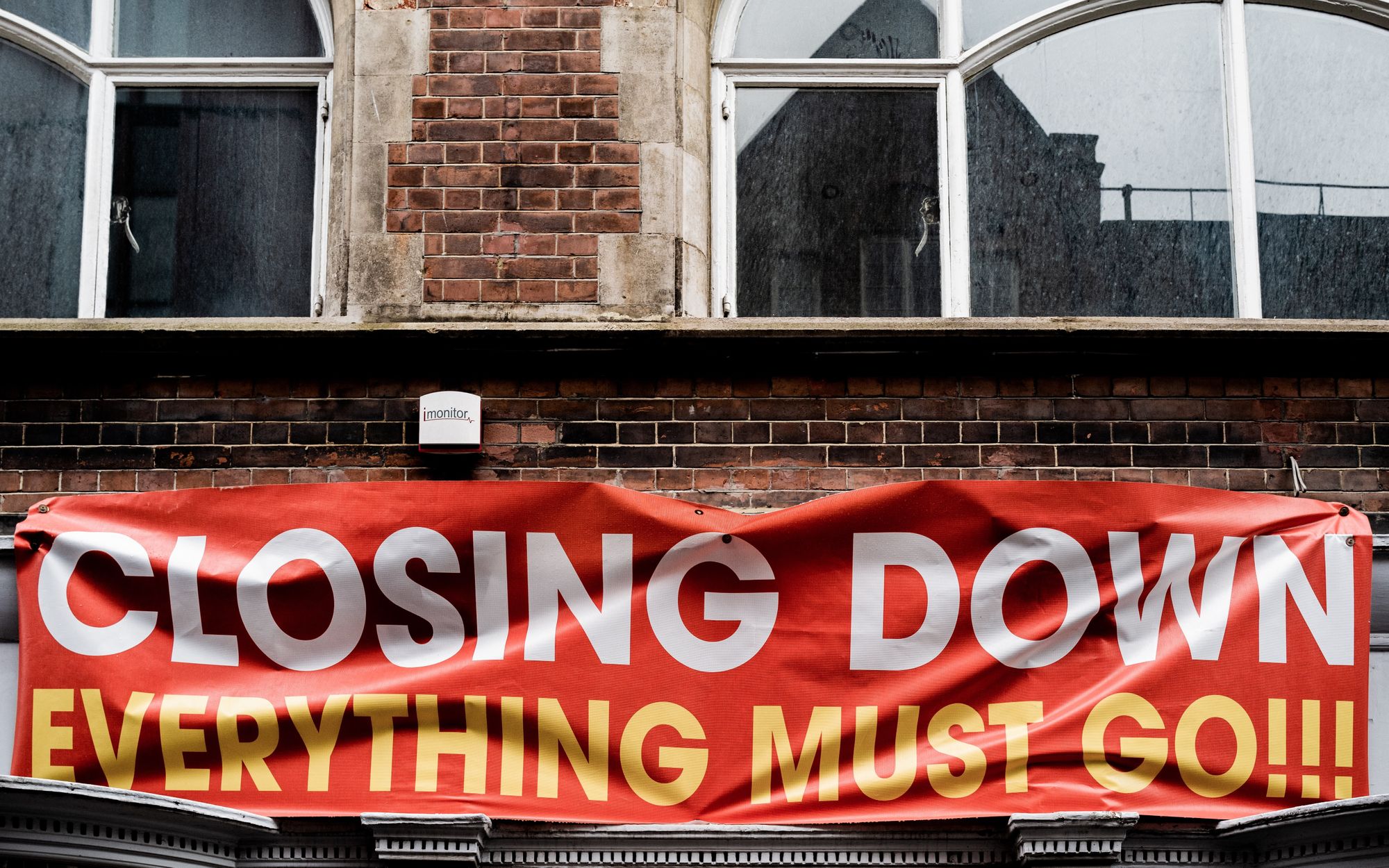As a freelance developer, knowing how much to charge for a project can often feel like a gamble.
It's easy to wonder "Am I setting my price too high?"
This is normally the first question that comes to mind.
And your brain will probably meet this question with a resounding "Definitely," followed by a swift rethink and subsequent price drop.
Why it's Tempting to Set Your Prices Too Low as a Freelancer
When you're using a platform like Fiverr and can see the prices other developers are proposing, it can be tempting (especially as a newcomer to the platform) to beat them all by offering the lowest price possible.
Surely this is the only way to get a client to accept you, right?
Well, if you've come to this conclusion, let me tell you that you're one of the many, many developers who have thought and then done the exact same thing.
The result, unfortunately, is what's happening today on many of the popular freelancing sites where it's often a race to the bottom with your pricing.
As a freelancer, this is a game you don't want to play.
Once you start doing work for the lowest possible price, you're rushing through work to get as many projects done in as little time as possible (you've probably got mouths to feed, right?). This inevitably results in finished work with a drop in quality.
This also has the potential to negatively impact your reputation which could cost you future projects or, at the very least, prevent you from upping the price of your next project.
This is one of the more compelling reasons for not being the cheapest developer around. But there are several more which we will take a look at one by one in this article.
By the end, I hope you'll be convinced that it would be unwise to compete in a "Race to the Bottom". Instead, I hope to leave you hopeful and equipped with the tools and methods to break out from, or prevent, this "let me just be the cheapest" approach.
Why You Should Stay Away from Being the Cheapest as a Freelancer
Stop the Race to the Bottom
The "Race to the Bottom" refers to the situation when a client is offered services by several freelancers.
Unlike traditional bidding, something quite sad tends to happen – freelancers outbid each other by offering lower and lower prices until a minimum price (one that cannot be lowered) is reached.
This often means a client could pay you only a couple of dollars for work that will take you hours to complete.
Thanks to the global nature of many of the online freelancing platforms, a dollar has vastly different purchasing power depending on the country you're in.
For example, in some parts of the world, a dollar can get you a decent lunch whereas, in other countries, a dollar won't even get you a bottle of water.
New freelancers in places like the EU, USA, and other spots where prices are high don't always take this into account. It's easy to think that they need to set their lowest price to match that of the lowest they see on the freelancing platform. They think that this is the only way for a newbie project proposal to be accepted.
Since the dollar goes a much shorter distance in countries like those in the European Union, a freelancer often finds themselves in the position where they are making a loss on every project they take on.
This is a problem.
Clients View Your Services as a Commodity
When pitching services to a potential client, a freelancer will typically set a price per hour. This approach can lead to a client simply choosing another freelancer who has a lower price per hour.
You see, basing your potential value to a client on an hourly-based price is a disservice to you and, as a matter of fact, to your client.
By seeking to get more work, you might be inclined to drop the price of your hourly rate, prompting other competing freelancers to do the same.
Clients shopping around for a freelancer will do just that – shop around.
The problem here is not just that you are still competing on price by charging hourly, but also that you are not illustrating to the potential client the real value they can gain for their business by working with you.
If you want clients to stop viewing your skillset as just another commodity they can buy at the lowest hourly rate, you need to change your entire pricing approach.
We'll take a look at the solution to this problem later in this article.
Clients Don't Always Go For The Cheapest Option
You may think that by asking for the lowest price, you'll be bombarded by clients who are all eager to hire you for their next exciting project.
But, a word of caution before you decide to do this.
You see, many clients don't go with the cheapest option.
Often people in general will settle somewhere in the middle when offered varying pricing tiers. Chances are, you too have often turned down the cheapest price in favor of something a little pricier on the premise that you're receiving a lot more quality.
W. Poundstone's book, Priceless, illustrates this point with an interesting beer selling experiment.
A group of people were offered 2 kinds of beer: premium beer for $2.50 and cheaper beer for $1.80.
Almost 80% chose the premium beer.
After this initial test, a third beer was added as a cheap option for $1.60 in addition to the previous two.
The test was conducted again and found that 80% of people bought the $1.80 beer while the rest bought the $2.50 beer.
Interestingly, nobody bought the cheapest option…
On the third test, they removed the $1.60 beer and replaced it with a more expensive $3.40 beer. Most people chose the $2.50 beer, a small number opted for the $1.80 beer and around 10% opted for the most expensive $3.40 beer.
This is price anchoring in action and it is your friend when offering multiple pricing .
Remember it the next time you're tempted to set and stick to the cheapest price.
More Work Does Not Always Equal More Money
Setting the cheapest price for your services may very well do what you hoped it would – bring in more clients.
If you're lucky, you may even be turning clients down because you have so many. Well, at this point you should be making boatloads of money, right?
I mean, you literally can't take on any new clients because you already have more than you imagined possible!
If you're charging by the hour and you were offering the cheapest price, there is one thing I can tell you with certainty – you absolutely won't be rolling in dollars.
Why?
You've capped your earnings!
By placing a value on your time and setting that value to the lowest it can be, you've essentially lowered your potential earnings in a year. Even if you were working every hour of the year, you could be making a semi-decent income but you'd be physically wrecked.
Chances are, if you're in the freelancing game, one of the contributing factors to you choosing this lifestyle was that it would give you some semblance of a balanced life.
How will you achieve balance when you have no choice but to take on as many clients as possible and work endless hours just to make ends meet?
By setting the cheapest price, you're capping your earning potential and any hopes you had for a balanced life.
How to Avoid Competing with the Cheapest
Change Your Pricing Approach
If you're still using hourly-billing, now is the time to consider changing that in favour of something that is far more beneficial to you and your clients.
Value-based pricing is where you charge a fee based on the potential return for a business.
It's important to first get into the right mindset before you try to use this approach.
Keep the following in mind when getting used to the idea of using value-based pricing:
- You don't sell hours, you are selling a beneficial solution to a business problem.
- This approach is safer for the client as there are no hidden costs that inevitably crop up in hourly-based approaches (due to time delays, work inefficiency, and so on).
- By charging prices based on value offered, you can work with fewer clients with a focus on quality over quantity. This means you can charge more reasonable prices which, in turn, offers you the opportunity to build your client work around your ideal life and not the other way around.
- This allows you greater freedom as you can focus on building something great as opposed to constantly worrying about going over the client's budget.
I've provided you with the "Why". If you're interested in the "How" of value-based pricing, be sure to give Hourly Billing vs. Value Based Pricing a read.
Write Great Proposals
Clients often have problems with the prices offered by freelancers because they, the clients, don't understand the value or work that is going into the project behind the scenes.
In other words, they won't know the quality service you'll be providing for them unless you explain it to them.
You can change this by writing great proposals.
You send a proposal to an interested client after discussing the potential project. This is where you have the opportunity to position and present yourself as an expert.
In short, you want your proposal to show a keen interest in the business and its goals, provide solutions to how will help the business achieve its goals, and show various ways in which you can do this via pricing tiers.
This leads to the next thing you can do to avoid competing with the cheapest.
Bundle Your Services
Ideally, you want to include three options in your proposal for a client to choose from.
As we saw in the beer example earlier, price anchoring can greatly affect the option which the potential client chooses.
Use this to your advantage.
Include the services that you'll provide in each option. This not only provides a mini-scope but also serves as something for the client to use when justifying the price to themselves (apart from the expert positioning you use elsewhere in the proposal).
Done smartly, bundling your services is a fantastic way to prevent you from competing with the cheapest out there and differentiating yourself from simply being "someone who makes websites".
Bonus Tips
Niche Down
Niching down greatly aids your cause in positioning yourself as an expert.
By niching down, you can build trust in a community, charge a premium fee, and have clients reach out to you.
Over-deliver on projects
Clients that you have done great work for are excellent lead-generators. Doing a good job for them means they're likely to refer you to others. This can lead to clients approaching you to work for them.
How do you ensure you'll get referred?
Provide excellent service and over-deliver.
Summary
Competing to be the cheapest developer out there is a sure-fire path to frustration, work exhaustion, and minimal income.
I hope that by the end of this article you understand the "Why" a bit better and feel better equipped to break out of this "Race to the Bottom" trap.
Thanks for reading!

